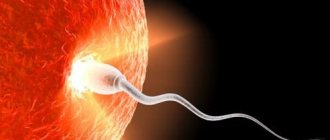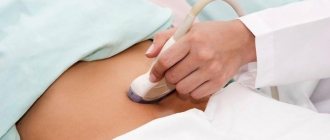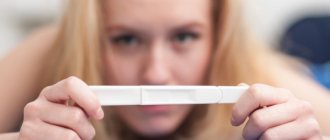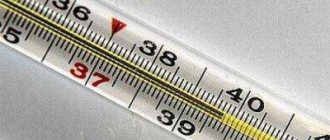Planning a pregnancy is inextricably linked with an in-depth study and analysis of all the intricacies of fertilization of germ cells and the conception of a new life. Almost all married couples are interested and important to know how much time nature has given a person to successfully conceive a child and how long the egg lives.
In other words, let's talk about how long female and male reproductive cells remain viable and do not lose their ability to fertilize.
Someone is looking for an opportunity to get pregnant as quickly as possible, while others are interested in this issue in order to choose a method of contraception for themselves, taking into account the life expectancy of the egg. In this article and this last question you will find clarification.
How does the egg mature and release?
Under the influence of the female sex hormones estrogen, one or more more mature follicles are formed in a woman’s ovary every month. Over time, one dominant follicle remains. It is here that a new female reproductive cell, an egg, ready for fertilization, also matures once a month.
The follicle matures, its membrane ruptures, and the egg comes out. First, the egg enters the abdominal cavity. This means ovulation has occurred. This is the name of the monthly repeating process of the release of an egg from the follicle into the abdominal cavity.
Thanks to the movements of the “fringe” surrounding the gate of the fallopian tube, this piece of new life enters the fallopian tube from the abdominal cavity. There the long-awaited meeting of the egg with the male reproductive cell, the sperm, should take place.
At this time, the woman’s concentration of estrogen in the blood decreases, but the production of another sex hormone, progesterone, increases. This hormone is responsible for preparing for pregnancy.
And progesterone takes on the main role. It helps prepare the “fertile” layer of the uterus (endometrium) for the attachment of a possible embryo. Progesterone also supports the preservation of the corpus luteum in the ovary, which has formed at the site of release of the egg.
If during the allotted life time the egg and sperm do not meet, and fertilization does not occur, the period of menstruation begins. There is an expression that menstruation is the bloody tears of the uterus for a missed opportunity to give the world a new life.
And then the female cycle repeats again. This happens every month from year to year throughout a woman’s fertile (childbearing) period. Every month the body persistently tries to fulfill its main vital function - the function of reproduction.
Normally, one egg matures every month. But sometimes two, three, and five ripen. Each of them can be fertilized. Then twins, triplets, and so on can be born.
If each child in a multiple pregnancy develops from its own separate egg, then these will be fraternal twins. I don’t write about them in detail. This is a topic for a separate large article.
Definition
To understand how long an egg lives in the body after ovulation, you first need to understand what ovulation itself is.
The maturation of the egg occurs in the ovaries. This process takes from 8 to 30 days (in most cases this happens within 2 weeks). In the middle of the menstrual cycle, the body begins to secrete large amounts of luteinizing hormone, or LH. 36-48 hours after this, ovulation occurs.
Outwardly, this manifests itself as the release of a mature germ cell from the follicle. It only takes a few seconds. Thus, we can conclude that ovulation lasts only a moment, and all subsequent processes are included in the ovulatory period.
How many eggs are released at ovulation will depend on many factors. Ideally, she should be alone. However, this does not always happen. In the presence of infectious diseases, endocrine disorders, hormonal therapy, and various malfunctions in the body, a woman may ovulate several eggs at once in one cycle. In this case, there is a risk of multiple pregnancy.
Women often wonder: “Where does the egg go after ovulation?” After leaving the follicle, it enters the abdominal cavity. However, not for long. Thanks to the movements of the villi surrounding the gate of the fallopian tube, the reproductive cell enters the fallopian tube, through which it will move towards the uterus.
It is in the fallopian tube that the reproductive cell must fuse with the sperm. If this happens, the resulting zygote will enter the uterus on day 3-4 and implant there.
If the egg does not meet the sperm, it will die in the fallopian tube and subsequently leave the body during menstruation.
What external and internal changes in a woman’s body will tell you about the onset of ovulation?
The egg is released from the ovary approximately halfway through the menstrual cycle. So, if a woman has regular menstruation every 28 days, then ovulation is expected by the fourteenth day of the cycle. It is known that the lengthening of the cycle occurs due to the first phase (before ovulation). Therefore, women with a longer but regular cycle should calculate the day of ovulation by counting 14 days ago from the first day of the upcoming menstruation.
Helpful: First sensations during pregnancy: symptoms and timing of their appearance
This is the so-called calendar way to determine the moment of ovulation and the favorable time for conception. But for a married couple planning to expand their family, this simple method is often not enough due to the fact that everything is very individual and approximate.
Average numbers “for everyone” with a wide range (12-18 days) will be of little help to a married couple planning a pregnancy. But today a number of indirect and obvious signs of the onset of ovulation are known.
What will more accurately tell a couple dreaming of a child when the favorable time comes to conceive a baby? Let's start with indirect signs.
Determining the onset of ovulation is not difficult
It is usually measured immediately after waking up. During ovulation, strong hormonal surges occur, causing basal temperature to change dramatically. Before the onset of ovulation, the temperature decreases, and after the onset it increases. If you plot changes in basal temperature, you can easily determine the most favorable time for conceiving a child.
There are also special tests that allow you to calculate the moment of ovulation. Outwardly, they are similar to those tests that allow you to determine pregnancy, and they need to be used in the same way - placed in urine. The closer you get to ovulation, the darker the stripe becomes.
Gynecologists resort to other methods for determining ovulation, including ultrasound examination, among others.
Indirect signs of ovulation
By the time of ovulation, under the influence of hormonal levels, both external and internal changes occur in a woman’s body. She may feel slight nagging pain in the projection of the uterus and its appendages. Sensitivity, that is, mild soreness of the mammary glands, is possible.
Many women note an improvement in their mood during this period. Improves complexion and skin condition. Libido (sex drive) increases. In general, nature has provided everything so that a woman is most likely to attract a male representative precisely during the period when conception is possible.
Of course, not all women are so sensitive and attentive to themselves to notice these changes. For those less attentive, there are clear signs of ovulation.
During ovulation (more precisely, a few days before it), the cervix of the uterus opens slightly. There is more cervical secretion (cervical discharge from the cervix). The nature of these secretions changes to more viscous, thick, and abundant. Basal body temperature rises. Every woman can notice these changes and draw certain conclusions.
I propose another interesting test that can be performed at home. I don't know if it will suit you. It depends on the degree of your disgust. We are talking about testing the tensile strength of the cervical secretion. The test is performed with two fingers. A thread of secretion is placed between the fingers and stretched. If the secretion has reached a degree of thickness that allows you to move your fingers 5-7 cm apart from each other and not break this thread, this is a sure sign of the onset of ovulation today.
Determining the duration of ovulation
So, we found out that the time a cell spends in the fallopian tube can be 12-36 hours, on average. You can use tests to determine how long an egg lives after ovulation (video reviews from specialists and user reviews will help you decide on the brand and type) in a particular woman.
Ovulation tests can be used to determine the lifespan of an egg.
The tests react to the concentration of luteinizing hormone (LH) in a girl’s urine. It reaches its peak at the moment of follicle rupture. After this, there are several hours (up to 10-12) to begin productive sexual intercourse. If you conduct testing and observe the changes in the stripes from the 11th to the 16th day of the cycle, you can see how the pale stripe becomes brighter and then fades away again. The most active shades indicate the onset of ovulation. When the LH concentration decreases sharply, the cell dies. This way you can find out the viability of your cell at home.
More expensive but effective reusable microscope devices operate on a slightly different principle. They detect the salt content in the girl’s saliva. Using a similar principle, you need to observe the change in the salt pattern by signing dates on the slides. At first the crystals will form in dotted lines, later in clear lines, and at the peak there will be a clear fern pattern.
How long does an egg live - we determine it using a microscope
If you need more accurate data (do not forget about some errors in the test strips), it is better to go to the clinic and be observed via ultrasound. It will begin at the moment of active growth of the bubble and every 1-2 days. This way the patient will find out the specific day, and also find out how many days her egg lives after ovulation. In the future, these facts will help you plan your conception correctly.
Special methods for determining ovulation
There are also special methods of modern medicine that give a woman the opportunity to find out the date of ovulation.
There is a known way to determine the day of ovulation by measuring basal temperature. The measurement should be taken closer to the middle of the cycle or throughout the entire cycle. It is better to carry out measurements several cycles in a row. In the morning, before getting out of bed, a woman measures her vaginal or rectal temperature with a regular thermometer.
Usually the thermometer shows 36.7-36.9°C. The results need to be written down in a table, or even better and more clearly drawn in a graph. A few days before ovulation, the temperature drops, then rises, reaching a peak (37.0-37.5 ° C) on the day of ovulation, and then gradually drops again.
By observing herself this way for several months, a woman will know exactly what day of the menstrual cycle she ovulates on.
There are special laboratory tests to determine ovulation. These tests are based on the determination of luteinizing hormone in urine as the main activator of the egg. The test is carried out by the woman herself using an indicator strip.
Helpful: Can Naphthyzin be used during pregnancy?
By carrying out such a test regularly, at a certain point you can notice an increase in the intensity of the color of the indicator strip. The concentration of the hormone in the blood and urine begins to increase 3 days before ovulation. The peak occurs precisely on the day the egg is released.
Ultrasound diagnostics (ultrasound) is the most accurate method for determining ovulation. Another advantage is that you can see in detail the maturation of the follicle, its size, and accurately predict the release of the germ cell from it.
In order to see the coveted mature follicle and not miss the time favorable for conception, ultrasound monitoring should begin on the 8-10th day of the cycle and be carried out every three days.
The method has a serious drawback. Not every woman can afford to have an ultrasound scan so often. Some will not be able to take time off or vacation from work. Some people will not be able to afford such expenses financially. There are also problems in terms of the widespread availability of this control method.
How long does an egg live after ovulation?
Scientists have found that from birth a woman has her own individual “set” of eggs - on average, there are a million of them in her body. Each time during the menstrual cycle, one egg matures, ruptures the follicle and is released from the ovary. This process is known as ovulation.
It is ovulation that is a necessary condition for conception, because the egg “escapes” from the ovary when it is completely ready for fertilization. But outside the follicle zone it cannot always last long. If fertilization does not occur, the egg dies within 12-24 hours and is excreted from the body during menstruation. If during this time the sperm managed to “conquer” her, then a new life is born in the mother’s womb.
Ovulation occurs 12-16 days before the start of menstruation for any cycle length. For example, with a 28-day cycle, ovulation usually occurs in the middle of the cycle. From the first day of the cycle, the egg grows and matures in the ovary. By the time of ovulation, she is fully mature and capable of fertilization. Its “exit” approximately occurs two weeks before the expected date of the next menstruation. There are more accurate methods for determining ovulation - these are measuring basal temperature, ovulation tests, monitoring vaginal discharge and others.
The question of how long an egg lives is of interest, first of all, to a couple who wants to give birth to a child faster. After all, an accurate calculation of ovulation will help determine those few hours when an egg ready for conception left the ovary.
For a modern woman, everything is much more complicated. A dynamic and increased rhythm of life, constant busyness, stress and health problems often become the causes of “failures” in the menstrual cycle. Normally, ovulation of an egg occurs two weeks before menstruation once per cycle, but sometimes it can be repeated. This double maturation of the egg is caused by hormones, strong emotions, and violent sexual intercourse. Some women do not ovulate at all, and in modern conditions this is also normal.
More on the topic
What happens during ovulation in the female body?
Ovulation period
What is ovulation and how long does it last?
When does pregnancy occur after conception and ovulation?
How long does ovulation last?
So, ovulation usually occurs two weeks before your period. Sometimes during this period a woman experiences pain in the abdomen. These manifestations are called ovulatory syndrome and should not be a cause for concern. How long the egg survives after ovulation depends on the individual characteristics of the woman’s body. In addition, when calculating the period during which fertilization is possible, one should take into account not only the life expectancy of the egg after ovulation, but also the viability of sperm (from 24 to 84 hours).
Why do women and men need to know how long an egg lives after ovulation? First of all, in order to plan the conception of a baby. With constant and regular unprotected sex with her partner, a woman, as a rule, can become pregnant within six months. And ovulation is the most favorable period for the birth of a new life. Considering the lifespan of the egg after ovulation, a woman’s greatest chance of becoming pregnant occurs during sexual intercourse no earlier than three days before ovulation or the day after it.
But even if you are sure that you have accurately and correctly determined the days of ovulation, pregnancy may not occur. After all, the lifespan of an egg is too short, and this makes the likelihood of conception low. In addition, ovulation may shift during different months in a woman's cycle. In some cases, you really have to work hard to fertilize the egg. Therefore, do not be discouraged if sometimes the process itself drags on for six months or longer. To speed up conception, have constant unprotected sex every other day throughout your cycle, and especially during the period of expected ovulation.
When planning a pregnancy, you should also take into account the fact that when conceiving directly in the first hours after ovulation, a girl is usually born. And if fertilization occurs in the following hours, then a boy will most likely be born. However, this is only a hypothesis that has not yet been proven, but also not refuted.
So, if you have determined the time of ovulation and found out how many days the egg lives after its release, then you can easily calculate a favorable date for conception. We should not forget that each organism is individual. Therefore, it is simply impossible to say exactly how long your particular egg lives. For some women this may only last a few hours, for others it may last several days.
And to determine the peak of ovulation, it is easier to use special tests. Their strips react to a sharp increase in the content of luteinizing hormone in a woman’s urine. The maximum increase in the indicator is observed 24-36 hours before ovulation. This is the best time to conceive a child.
Especially for beremennost.net Nadezhda Zaitseva
How long does a woman's egg remain viable?
Nature gave this small cell only 12-24 hours of life. At the same time, if you plan intimacy with a man during these 12-24 hours, it is not a fact that conception will take place. If everything were so simple, the issue of pregnancy planning and conception would not be so pressing for many families.
The maximum probability of fertilization of the egg is precisely at the moment of its release from the follicle. With every hour of her life, the chances of becoming fertilized, forming a zygote from which the embryo will begin to develop, decrease. But the sperm still needs time to “reach” the egg.
It is known that sperm reach the fallopian tubes several hours (usually 3-4 hours) after they have entered the woman’s body. They will still need time to “break through the defenses” - to dissolve the egg shell. So it’s not for nothing that gynecologists believe that it is better to start an active sexual life 3-4 days before planned ovulation and continue it for another day after its onset.
The thing is that male reproductive cells live longer than female ones. They can spend 3-5 days, and sometimes even up to a week, in a woman’s genital tract, maintaining the ability to fertilize.
The lifespan of an egg and its ability to be fertilized can be affected by various factors: stress, inflammatory diseases of the genital organs, changes in hormonal levels, which often happens after long-term use of contraceptives.
Who in our time can boast of the absence of these factors, for example, stress in life or at work? Almost no one. Therefore, we are seeing more and more women having problems conceiving.
Factors affecting viability
More than one factor influences the lifespan of an egg.
The most significant include:
- the presence of an inflammatory process in the female organs;
- various gynecological ailments, especially chronic ones;
- functionality of reproductive organs;
- congenital pathologies;
- woman's hormonal background;
- condition of the fallopian tubes;
- taking any medications (long term);
- state of the nervous system (stress, depression);
- bad habits (smoking, drinking alcohol or drugs);
- bad food;
- disrupted daily routine.
All of the above reasons not only shorten the life of the egg, but also disrupt the normal functioning of other organs.
All inflammation in the reproductive organs and infectious diseases disrupt the functioning of the reproductive system. If you do not go to the hospital in a timely manner and do not start treatment, there is a risk of infertility. If the tubes have poor patency, the egg will not be able to be released, and therefore conception will not occur.
With congenital anomalies of the pelvic organs, sometimes there is no ovulation at all, and if the egg is released, it may not move forward or implant. Such problems are usually corrected surgically.
Due to disrupted hormonal levels after ovulation, the egg sometimes exists for just a few hours, and this is very problematic. The gynecologist will select a special drug that will bring everything back to normal.
And of course, everything depends on a woman’s lifestyle, including the viability of the egg. Smoking, alcohol, stress, poor sleep, unbalanced diet and hard work take their toll. It is difficult for such ladies to get pregnant. You will have to try for a long time to make something work. But if you don’t change your life, then it’s not a fact that the pregnancy will continue. And if you succeed in carrying the fetus to term, how will it affect the physical and mental development of the child? The consequences are terrible and then there is no escape from them. Therefore, it is advisable to eradicate all negative factors at once.
What determines whether a boy or a girl will be born? Who is “to blame” for this?
Let’s give an example of a very real-life situation, for some it’s funny, for others it’s not so much. Probably, according to the principle - until it touches you. It happens that the father of the family declares to the woman who bore him four daughters: “Why, you can’t even give me a son!” Tell me, who is to blame here?
Helpful: Why does the stomach pulsate during pregnancy? Causes.
Let's start with an educational program. An egg is a large reproductive cell because it contains a large supply of nutrients necessary for a full start to a new life. It always carries the sex X chromosome (always one, only the X chromosome).
Spermatozoa are male reproductive cells. They are small, mobile, with a tail and a head. They do not contain any reserves of nutrients; they do not need food. Each sperm also carries one sex chromosome. But it can be either the X chromosome or the Y chromosome.
That is, sperm can be of two types, carrying the X chromosome and the Y chromosome. If the union of a sperm with an egg produces a set of sex chromosomes XX, it is a girl. If, after the fusion of a sperm with an egg, a set of sex chromosomes is obtained XY, it is a boy.
So who is “to blame” for the fact that girls or boys are born, think for yourself. Mom will give away her X chromosome in any case. She simply has no others. But which chromosome - X or Y - will dad give is another question. So all questions about the sex of the child should be addressed to the father.
It is said, although not proven, that sperm with an X chromosome live longer than those with a Y chromosome. Thus, I want to debunk the myth that supposedly “girls are obtained from an “old” egg.” It turns out that it’s all about the more tenacious X-sperm.
But this is true, half jokingly and half seriously. The number of X and Y spermatozoa formed at first is strictly the same. And statistics constantly prove that at the time of fertilization, the number of zygotes (fertilized eggs) with sets of sex chromosomes XX and XY is also the same.
But the embryos of XY boys are less viable and more often die at different stages of development for various reasons. The weaker sex)) And by the time girls are born, more survive.
Calendar method of contraception.
For those who read this article with the aim of finding out the life expectancy of an egg to choose a method of contraception, I will explain something additional.
Having learned the days of the life of the egg (“unsafe days”), people consider the right decision to simply abstain from intimacy during these days. I hope it has already become clear from the above that this is wrong and does not guarantee protection from pregnancy.
Let me remind you that the day of ovulation “floats” depending on the regularity of the cycle. The lifespan of an egg varies under the influence of unfavorable factors. But sperm can wait for their “lady”, remaining in the genital tract for quite a long time (sometimes up to a week). I hope I have convinced you that it is better to use other, more effective methods of contraception.
Lifespan
The lifespan of an egg is dramatically shortened after it leaves the follicle. In most cases, after ovulation, the ability of the egg to fertilize lasts from 12 to 24 hours. Moreover, the influence of various unfavorable factors can significantly reduce this indicator.
This is why it is extremely important for a couple not to waste time and work hard to conceive. By the way, doctors recommend having an active sex life throughout the entire menstrual cycle, with the exception of menstruation (in this case, the risk of infection increases). The fact is that, unlike eggs, sperm have a much longer life expectancy, and they can wait for more than one day, already in a woman’s body, for ovulation and the release of the egg.
To understand when it is better to increase sexual activity to conceive, knowledge alone regarding how many hours the egg lives after ovulation is not enough. In this case, it is very important to calculate the date of ovulation itself. At the moment, this can be done using several methods.
Basal temperature chart. To do this, a woman needs to measure the temperature in the mouth, anus or vagina for a month, starting from the first day of the cycle. This should be done in the morning, without getting out of bed.
To get reliable results, you need to use the same thermometer and measure the temperature only in one chosen way. The results obtained must be written down in a notepad. When ovulation occurs, the temperature rises to an average of 37.3 degrees and remains this way until the onset of menstruation.
Testing. An ovulation test will not show how long the egg lives, but it will indicate the date of release of the reproductive cell from the follicle. You can find tests at any pharmacy. Their choice today is extremely wide. A woman can buy paper test strips, inkjet devices, and even electronic devices. At the end of the test, two clear lines will indicate a positive result.
Minimicroscope. In this case, you need to apply saliva to a special area and then look at it under a microscope. When ovulating, a woman will be able to see patterns similar to fern leaves.
Ultrasound. This is one of the most accurate methods. Thanks to it, it is possible to completely track the process of maturation of the germ cell. However, for this the patient will have to visit the doctor’s office more than once. In most cases, studies begin on the third day of the cycle and are subsequently carried out every 2-3 days.
Among other things, especially sensitive women can determine the date of ovulation by special symptoms. These include minor pain in the chest and lower abdomen (may radiate to the lower back), increased appetite, and mood swings. Vaginal discharge may resemble egg whites and may contain a small amount of blood.
More often does not mean better...
Many people mistakenly believe that the main solution to the problem of a married couple who has wanted to see the coveted two stripes for so long is to work every day on procreation. Firstly, the attitude in this matter is very important. You can’t approach this: “I don’t want to, but since I have to...”. Secondly, the male body needs time to recover, since with each ejaculation the number of active sperm drops. And when the concentration of active sperm in semen is below a certain number, conception becomes impossible.
I hope that with the help of this article, all the nuances will be taken into account, and couples planning children will quickly see the coveted two stripes, hear the first cry of their child and the soul-warming words “dad” or “mom” addressed to them.










